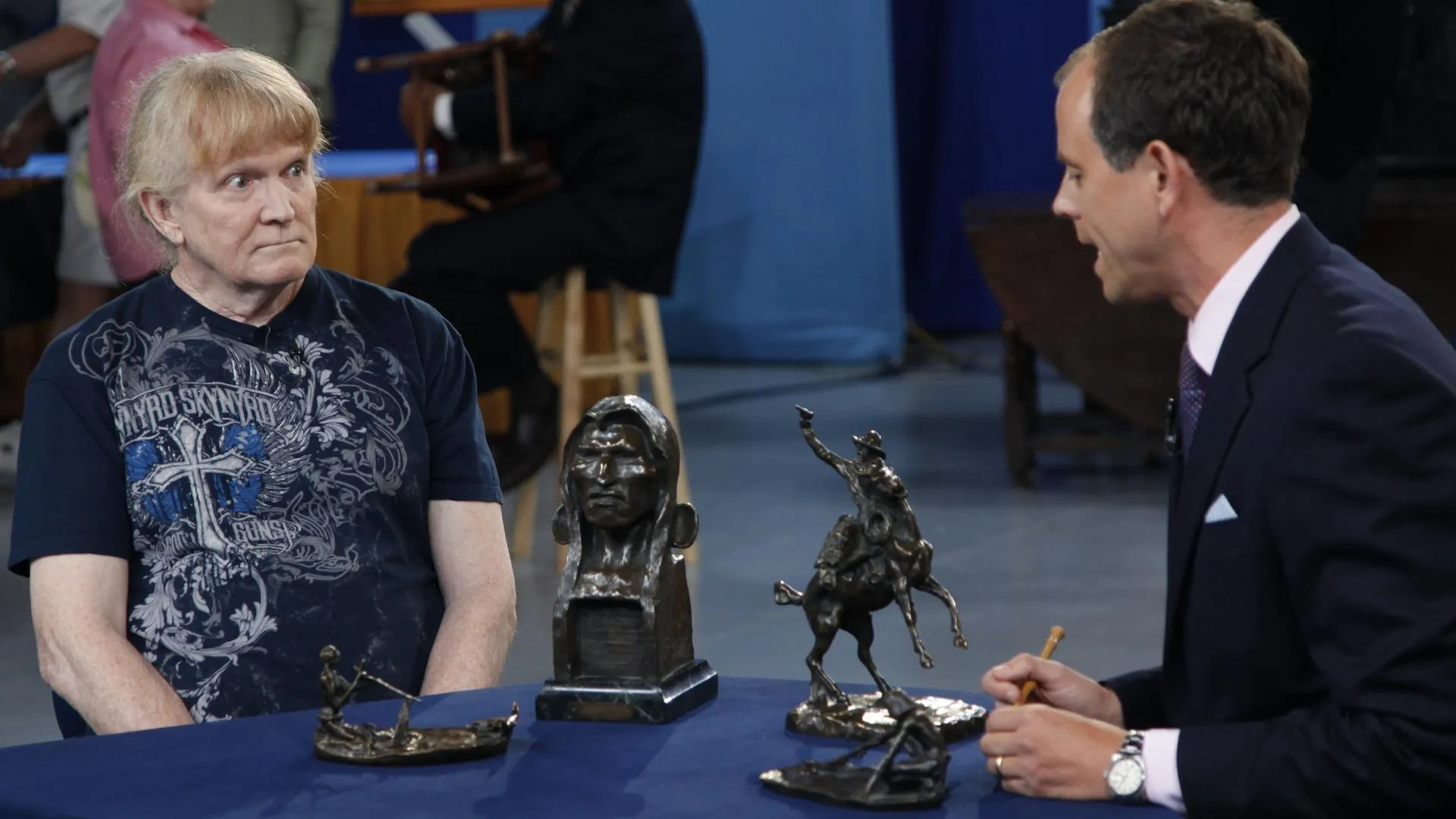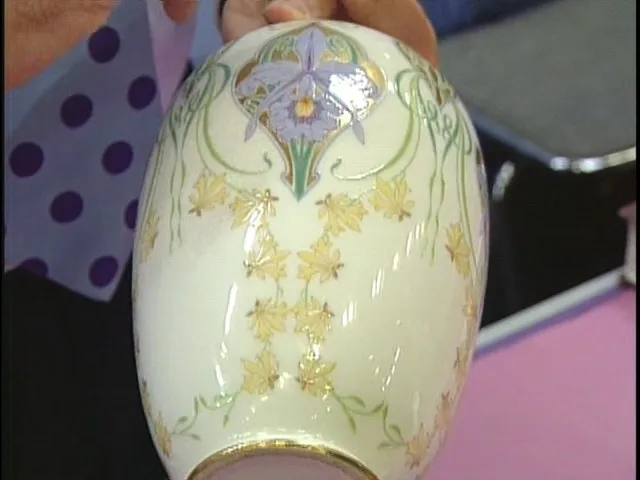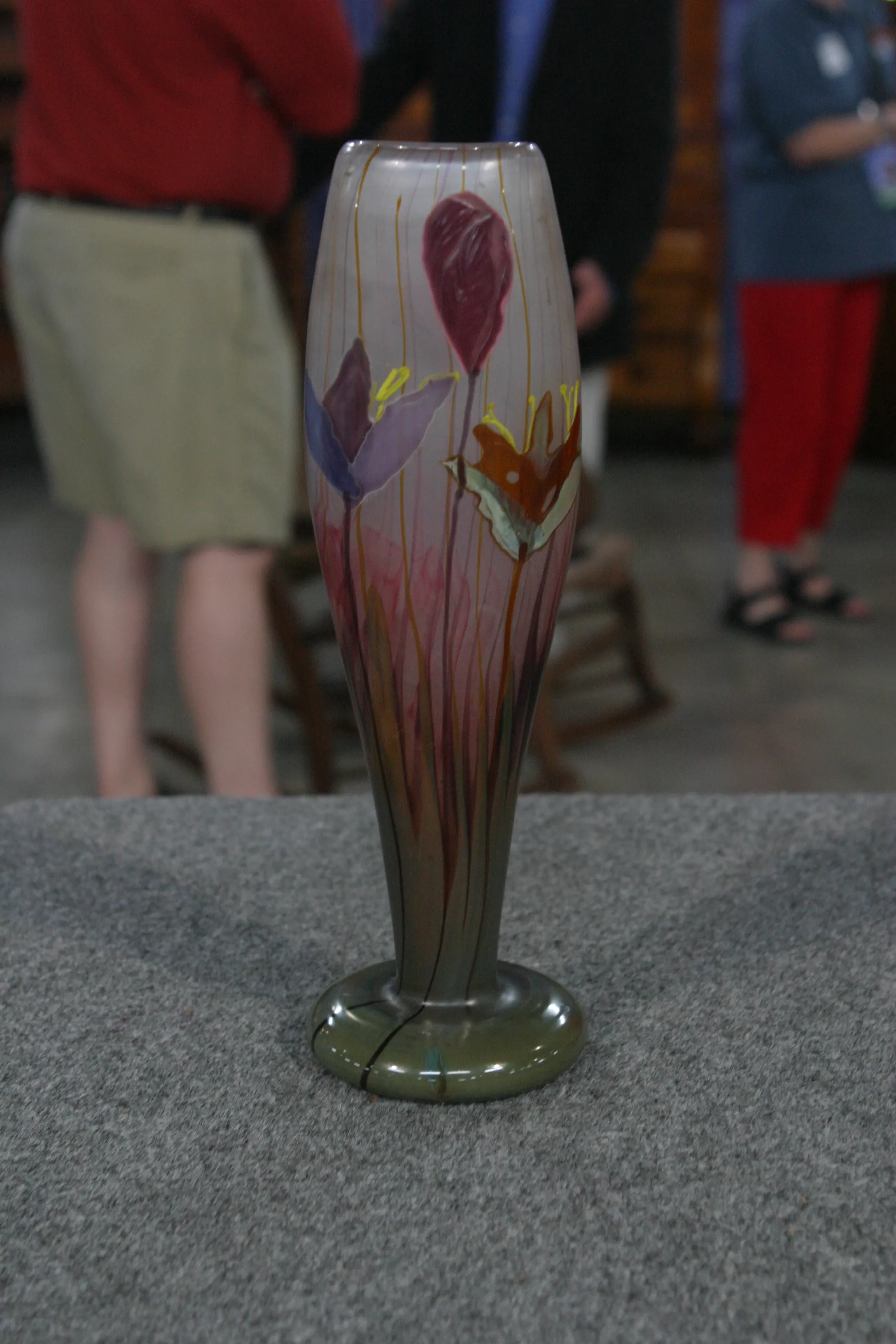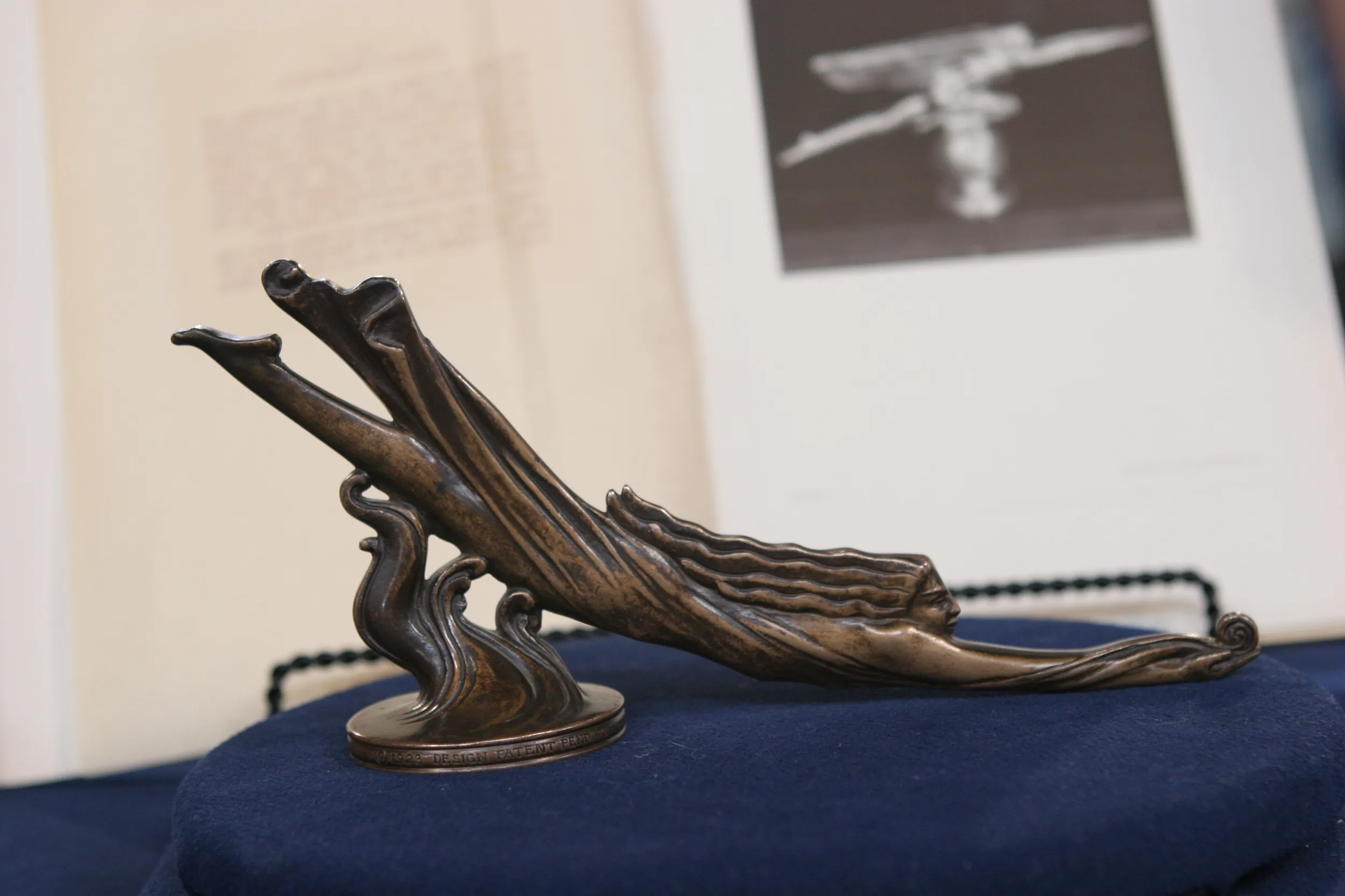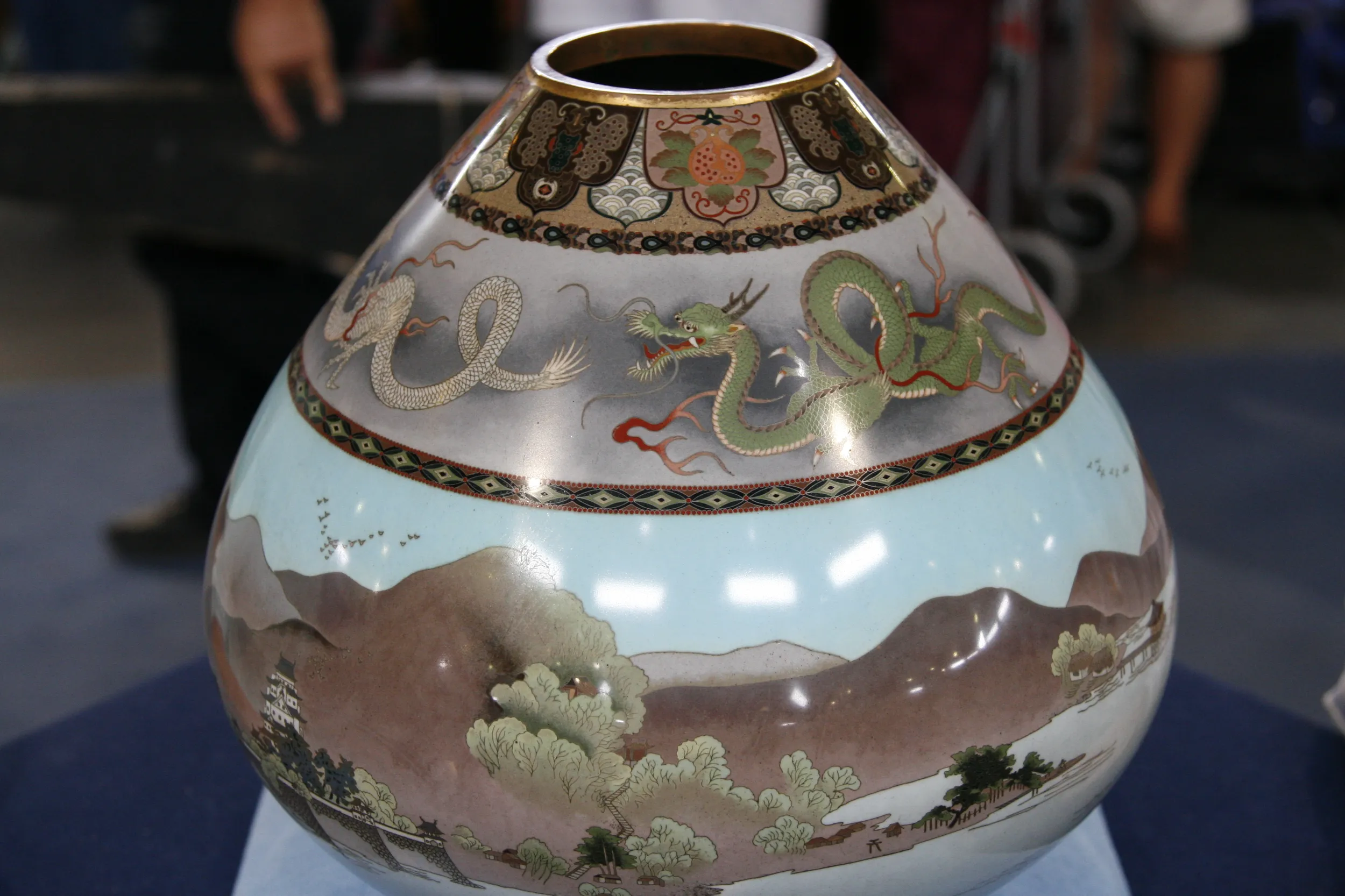APPRAISER: Got a great piece of pottery here with some neat decoration on it. Where was it you told me that it came from?
GUEST: Gentry, Arkansas. My dad lived there when he was young, like in the '40s, and they met a man who lived in a cabin and he had ties to the Civil War. And when he passed away, his family lived in California and asked my family to go in and clean up the cabin and said they could keep anything that they found, and this was the one thing that really caught my dad's eye. And he has since given it to me, a couple years ago.
APPRAISER: Now, where do you have it in the house?
GUEST: I just have it by my couch. I keep remotes and stuff... My kids put toys in it.
APPRAISER: That's a lot of remotes.
GUEST: Yeah. (laughs)
APPRAISER: This started life as a straight-sided crock that was made in a pottery factory, but when I say factory they were hand-throwing them.
GUEST: Oh, okay.
APPRAISER: And the pottery was probably not in Arkansas. It could have been Ohio, Pennsylvania, even New York.
GUEST: Okay.
APPRAISER: This is stoneware. This is what most people in the trade would call an "end of day" piece. At the end of the day, you've got a little extra cobalt blue in your slip tray, and so you just decide that you're going to do something for the heck of it.
GUEST: Okay.
APPRAISER: And so ordinarily, the only decoration you would have seen on it might have been that six...
GUEST: Okay.
APPRAISER: for the fact that it's a six-gallon. That would have been the standard decoration.
GUEST: Okay.
APPRAISER: But then, you know, what takes it up a level is the man, who could be a Union soldier, with the hat.
GUEST: Right, right.
APPRAISER: You put that face on there, you put the fly, you put the shoofly thing on there, and then you fire it, and you got to take it home. People that collect this kind of stuff like to see a maker's name on it, but you don't usually see a maker's name on an end-of-day piece because the company didn't want their name on it. They didn't want that to be representative of what they were selling. You've got a few condition issues. There's a crack here, you've got some chips around the handle...
GUEST: Mm-hmm.
APPRAISER: and some chips on the rim. For a collector, that's not a deal-killer. They're more interested in the decoration, and the condition is probably going to affect them some, but I talked with my colleagues over there at the table, and we feel pretty comfortable with a price of $4,000 to $6,000 retail for this.
GUEST: (gasping) (laughing) Wow. Whoo!
APPRAISER: It's a cool thing.
GUEST: And to think I just used it to bring the thing I was going to bring to the show in. (laughs)

